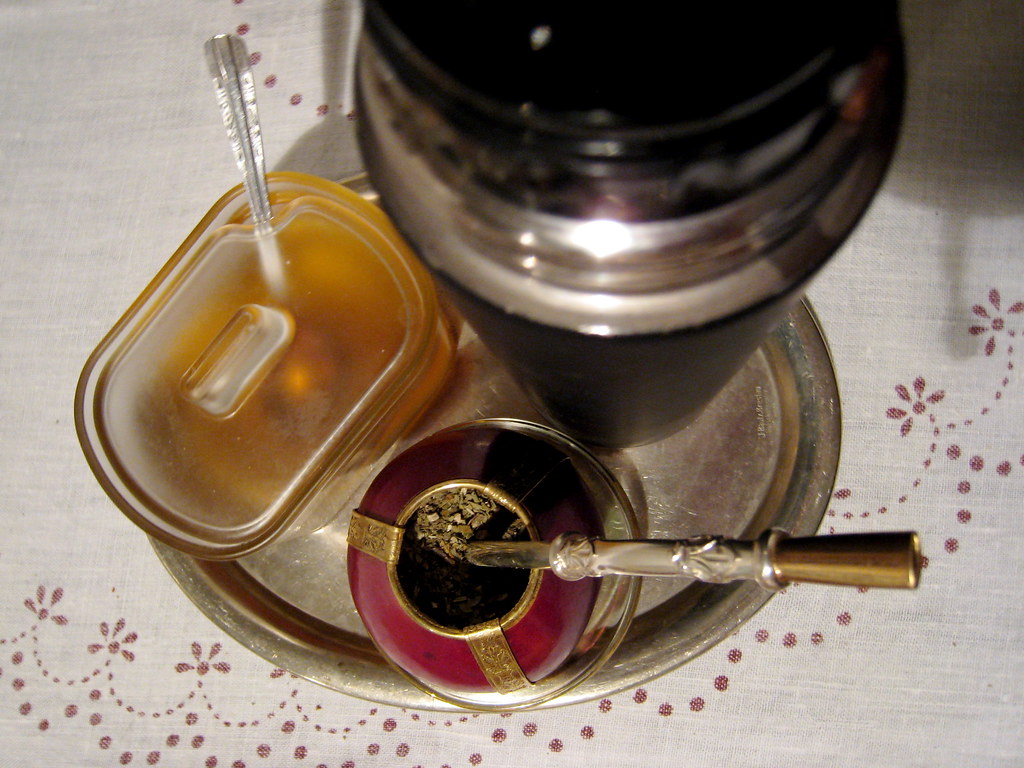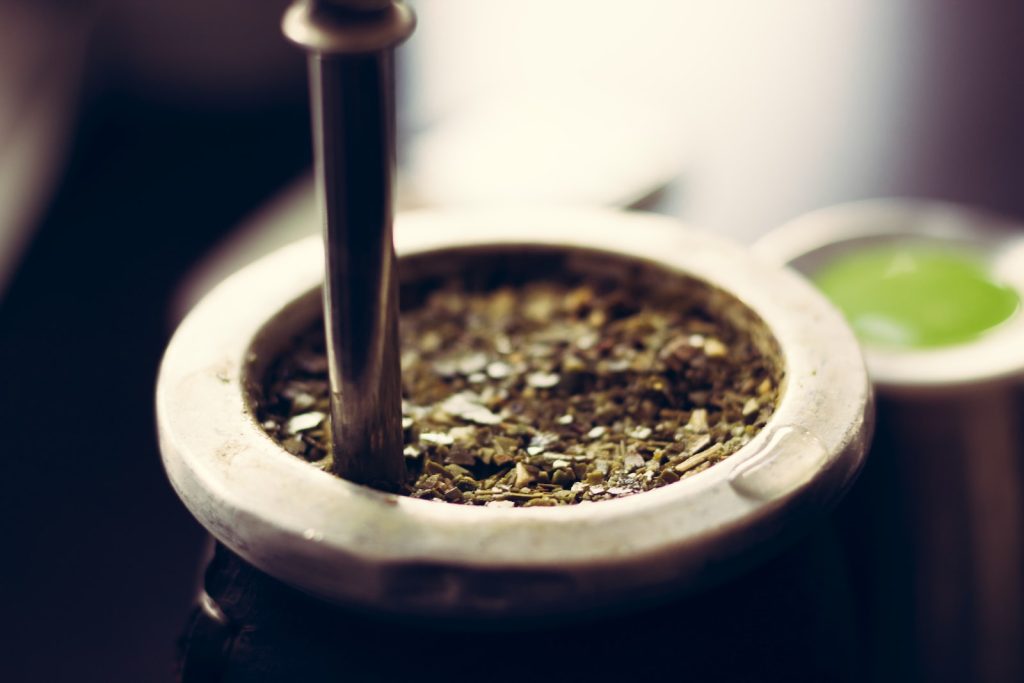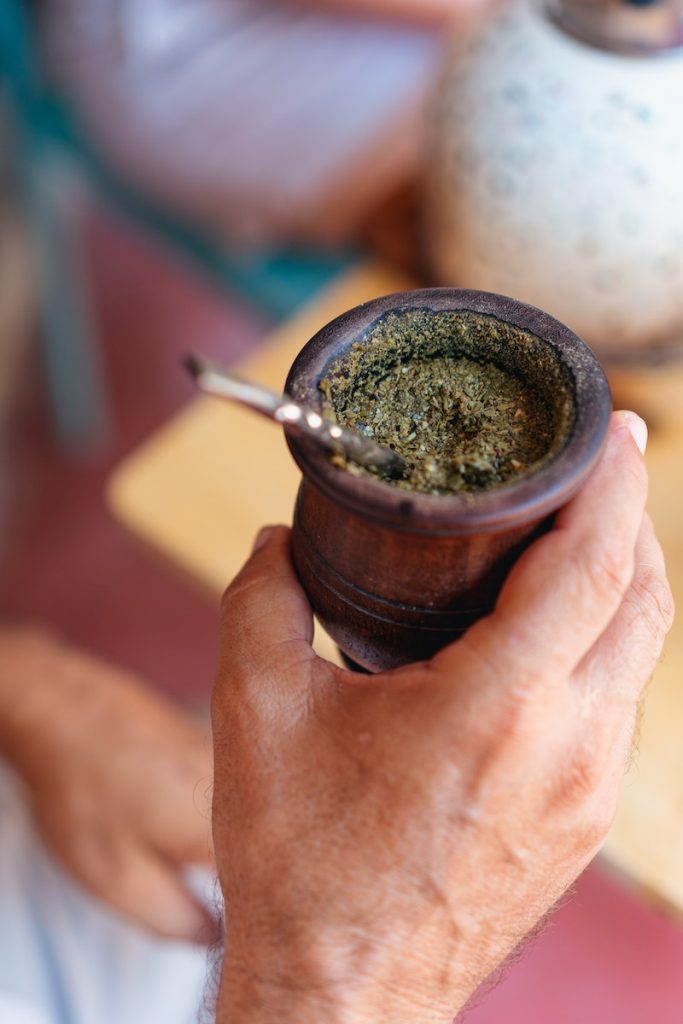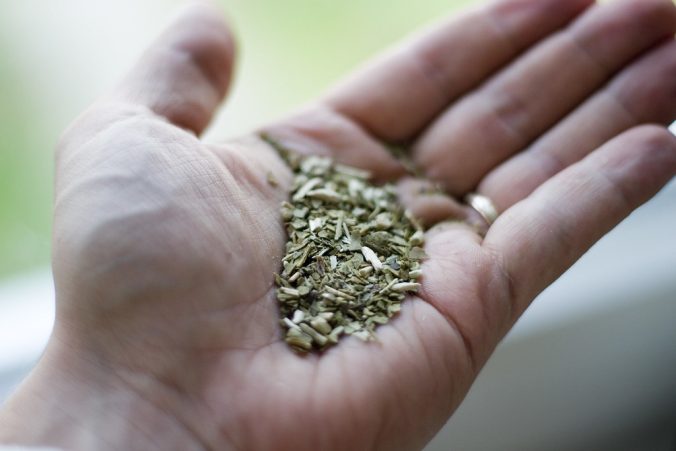Table of Contents
- Introduction to getting you the perfect Yerba Mate water temperature
- 1. What is Yerba Mate?
- 2. What Temperature Should Be Used For Yerba Mate Water?
- 3. How Does Temperature Affect Yerba Mate Flavor?
- How does brewing temperature impact your cup of Yerba Mate?
- 4. What Equipment Is Necessary for Preparing Yerba Mate?
- 5. What Are the Health Benefits of Drinking Yerba Mate?
- 6. How to Make Yerba Mate Tea at the Right Temperature
- Frequently Asked Questions about Yerba Mate
- Can I reheat yerba mate?
- Conclusion
Introduction to getting you the perfect Yerba Mate water temperature
Have you ever wondered why yerba mate is best enjoyed at a specific temperature? As an avid tea lover, I have heard many different opinions on the perfect water temperature for brewing this delicious herbal beverage. In this article, I will explore the science behind why certain temperatures bring out the flavor and aroma of yerba mate more than others. We’ll look at how to use thermometers and other tools to ensure that our cup of tea is just right every time! So sit back, relax, and let’s delve into what makes the perfect cup of yerba mate!
1. What is Yerba Mate?
Ah, the age-old question: what is yerba mate? Like a cup of steaming hot tea on a crisp winter morning or a cool glass of lemonade in the summer sun, sipping yerba mate has been a sacred ritual for centuries. It’s an ancient drink that hails from South America and is full of flavor, nutrition, and tradition.
Yerba mate (pronounced mah-tay) is made by harvesting the leaves and twigs of the Ilex paraguariensis shrub, which are then dried over fire and ground into powder form. This traditional beverage was first consumed by indigenous peoples 5000 years ago. As they say, some things never change! The smoky flavor of this concoction has captivated hearts around the world, mine included.

One thing to keep in mind when making your own yerba mate is the water temperature. The ideal temperature for preparing it is between 140°F and 158°F (60°C and 70°C). Any higher than that can burn off its complex flavors, so be sure not to get carried away with boiling temperatures! Trust me, you’ll thank yourself later on for taking care of your brewing technique. Allowing your taste buds to experience every nuance of flavor will make or break your enjoyment of this beloved beverage.
2. What Temperature Should Be Used For Yerba Mate Water?
“The best tea is made with love”—an old saying that perfectly encapsulates the spirit of brewing a special cup of yerba mate. Brewing yerba mate requires precision and attention to detail, especially when it comes to water temperature. So what’s the ideal water temperature for yerba mate?
As any tea lover knows, getting the most out of your ingredients depends on using the correct temperature when infusing them in hot water. This holds true when making yerba mate as well. If you use boiling or near-boiling water, it can make your drink bitter. But if you don’t heat up the water enough, then you won’t be able to release all those amazing flavors from the herbs. The key is balance—finding just the right amount of heat for the perfect infusion.
When preparing yerba mate, aim for a temperature between 158 and 176 °F (70 and 80 °C). This range will allow you to extract all those complex aromas and tastes without compromising quality or flavor. It may take some time and practice to find your own favorite temperature within this range, but once found, brewing every batch will become far more enjoyable!
3. How Does Temperature Affect Yerba Mate Flavor?
Every tea lover knows that the temperature of the water can make or break a cup of yerba mate. It’s not only about getting the best flavor out of your chosen blend but also about bringing out the unique nuances and aromas that are often hidden until you get the temperature just right! So what effect does temperature have on the taste of yerba mate?
When it comes to brewing this South American favorite, there is definitely an optimum range for enjoying its full flavor profile. As a general rule, using water that’s between 160 and 180 degrees Fahrenheit will give you perfect results each time. Anything higher than 180 degrees won’t extract as much flavor from your leaves, while temperatures lower than 160 may leave them under-brewed. Here are some other key points to keep in mind:
• Too hot: If you use boiling water straight off the stovetop, this could cause bitterness and flatness in your cup due to over-extraction.
• Too cool: Water below 160 degrees won’t bring out all of the subtle flavors in your yerba mate blend. You might end up with something too weak-tasting and lacking in complexity.
- Just right—When brewed at the correct temperature, you should expect a robust yet smooth cup with pleasant notes and a well-balanced aroma.
- Experimentation: Temperature affects different types of yerba mate differently, so feel free to experiment within reason by adjusting up or down slightly depending on how strong or mild you prefer your beverage.
- Cold brew: Another popular method is cold brew, which involves steeping overnight to produce a refreshingly sweet drink without any tannins or bitterness commonly associated with over-extracted teas.

How does brewing temperature impact your cup of Yerba Mate?
For those who take their tea seriously, understanding how heat impacts the final product can be essential to achieving great results every time. And since everyone has different preferences when it comes to strength and sweetness levels, finding an ideal match can require some finesse—but it’s worth it! With practice (and maybe a bit of trial and error), anyone can become a master brewer capable of producing perfectly crafted cups every single time they prepare their beloved yerba mate!
4. What Equipment Is Necessary for Preparing Yerba Mate?
In the world of tea-drinking, yerba mate is an absolute essential for a truly unique flavor experience. Brewing it up just right can be quite a process, but with the right tools and knowledge, you’ll have your cup ready in no time!
When making your own yerba mate at home, there are some key things to keep in mind that will help create the perfect brew. Firstly, temperature matters: too hot or cold water can make all the difference between an okay cup of yerba mate and one that’s out of this world. That said, how do you know what temperature is best? Generally speaking, most people prefer their yerba mate brewed at around 160–180°F (71–82°C).
To achieve that ideal temperature, you’ll need some basic equipment. A thermos flask works great since they retain heat very well; otherwise, a kettle or pot on the stove should work fine as long as you don’t let the water boil. Additionally, you’ll want to get yourself a gourd, which is basically like a traditional teacup made from calabash, along with a bombilla (a metal straw) to act as both a filter and stirrer when drinking. You’re all set with these items and some high-quality loose leaf yerba mate!
Now that your gear’s sorted out, all that remains is brewing up your first delicious batch. Depending on your taste and how strong you want your tea to be, try different amounts of leaves and temperatures until you find something that tastes just right.
5. What Are the Health Benefits of Drinking Yerba Mate?
Drinking yerba mate has been a centuries-old tradition in South America, and the health benefits are just as old. Here’s a look at five of them!
First off, it’s packed with vitamins and minerals like vitamin C, selenium, zinc, and iron. This makes yerba mate tea an excellent way to get your daily dose of essential nutrients without having to eat unhealthy processed foods. Plus, its high antioxidant content helps protect against cell damage—something we all need more of these days!
Yerba mate is also said to be great for weight management due to its ability to boost metabolism and suppress appetite. By drinking this energizing beverage on a regular basis, you can help keep those unwanted pounds away while still getting natural energy from the caffeine and other components that occur naturally within it.
Finally, many people swear by yerba mate’s ability to improve mood and mental focus levels. It contains compounds such as xanthines, which play an important role in improving alertness and concentration for extended periods of time; it’s perfect for when you’re feeling low or struggling to concentrate on work tasks throughout the day.
In short, Yerba Mate offers plenty of potential health benefits that make it worth trying out if you haven’t already, including but not limited to:
- Vitamins and Minerals
- Antioxidant Defense
- Weight Management Assistance
- Mental Focus-Boosting Properties
- Mood-enhancing effects
- Improved digestive health and immune system support
6. How to Make Yerba Mate Tea at the Right Temperature
Did you know that yerba mate has been enjoyed for centuries? This delicious South American tea is full of flavor and health benefits. But how do you make the perfect cup of yerba mate to get all the nutrients it offers? Read on to find out how to make your own cup at the right temperature!
Brewing your own cup of yerba mate can be a great way to relax after a long day. The ideal water temperature for making this tea is between 180 and 200 °F (82 and 93 °C). To reach these temperatures, start by bringing cold, filtered, or spring water just below boiling. Then let the liquid cool off before pouring it into a traditional gourd with loose leaves. You can also use an infuser if desired.
Once you’ve added the hot water, cover and steep for 3–5 minutes or longer, depending on preference. If you brew it too hot, it will result in bitterness, but don’t worry! Just remember that patience is key when brewing up a delicious pot of yerba mate. When done correctly, your tea should have earthy notes and a subtle sweetness without any astringency or bitterness. Yum!
Making your own yerba mate gives you control over strength and taste, as well as allowing you to enjoy its many health benefits like improved mental clarity and focus and antioxidants for better overall wellbeing. So next time you want to take a break from regular coffee or black teas, try some homemade yerba mate!
Frequently Asked Questions about Yerba Mate
As the proverb goes, “A spoonful of sugar helps the yerba mate go down!” The perfect cup of yerba mate can be a wonderful treat for tea lovers. But how much should you use to make sure it comes out just right? Let’s dive into this sweet dilemma and explore what makes a good cup of yerba mate!
To get that perfect balance between flavor and caffeine in yerba mate, here are four key steps:
Start with one teaspoon of loose-leaf yerba mate per 8 ounces (240 mL) of water.
Use filtered or spring water instead of tap water, which may contain chemicals and minerals you don’t want and that will change the taste of your brew.
Heat your water until it is almost boiling—around 185 °F (85 °C).
Steep the tea for 5 minutes before straining and serving. You can adjust the steeping time as needed depending on the desired strength.
Personally, I prefer my yerba mate to be served warm and soothing.When prepared properly with just the right water temperature, nothing beats a good cup of hot yerba mate for me. It provides an extra oomph of flavor and aroma compared to its cooler counterpart. Plus, drinking something hot can be quite comforting, especially during those colder months when you need a little warmth inside!
That said, there are still plenty of folks who enjoy their yerba mate straight up chilled and icy.And if that’s what floats your boat, then go ahead and get brewing! After all, some would argue that cooling down the beverage allows more subtle notes in the taste profile to shine through, giving you a unique experience every time. So don’t let anyone stop you from enjoying your favorite brew however you like it best.
Yerba mate contains roughly 85 mg per 8-ounce cup—a level comparable to what’s found in green teas or coffee. This amount can vary depending on the type of yerba mate used, as well as other factors such as preparation time and water temperature. So whether you like your drinks hot or cold, be sure to enjoy them responsibly!
An important thing for all tea lovers to remember is that drinking too much caffeine can lead to adverse effects such as insomnia and restlessness. Therefore, moderation should always be practiced when enjoying any caffeinated beverage, including yerba mate.
Can I reheat yerba mate?
Brewing a perfect cup of yerba mate is an art form, like painting or sculpting. It takes patience and precision to get the temperature just right for maximum flavor. But what if you don’t drink all your beer in one sitting? Can you reheat it and still get that same great taste?
Let’s break this down:
Pros:
- You can store large amounts of tea leaves without spoiling them.
- The water will be up to temperature much faster than starting from scratch.
Cons:
- The flavor might not be as potent due to evaporation over time.
- If the water is heated too high, it will become bitter and ruin the flavor of the tea.
Yerba mate lovers should take precautions when reheating their favorite beverage, especially if they are expecting something similar to freshly brewed tea! Aim to use low heat settings on a stovetop or microwave oven, stirring occasionally while heating until desired temperatures are reached. This way, the flavors won’t dissipate before being enjoyed again!
Although some may argue that there’s no substitute for drinking a freshly made cup of yerba mate, reheated cups have saved many tea fanatics days who were looking for another caffeine fix later on after brewing their initial batch earlier in the morning! So go ahead and try warming up your leftovers—with proper preparation, you’ll be able to enjoy excellent-quality yerba mate every single time.

Conclusion
Yerba mate has become more popular in recent years due to its many benefits, flavor, and energizing properties. It can be used hot or cold depending on your preference, but the ideal temperature for brewing Yerba Mate is between 180 and 200 °F (82 and 93 °C). The amount of tea leaves you use will depend on how strong a brew you prefer. You should also note that Yerba Mate does contain caffeine, so pregnant women may need to avoid drinking it. Lastly, if you have leftover brewed tea, do not reheat it, as this could make the tea bitter and unpalatable.
When making yerba mate at home, why not experiment with different temperatures? Some people like their drink stronger while others prefer something lighter—there’s no right answer! In fact, according to one study by the Institute de Investigaciones en Ciencias de la Alimentación (INCIAl), over 70% of drinkers preferred a beverage made from yerba mate brewed at 200°F (93°C)! So don’t be afraid to step out of your comfort zone when experimenting with different temperatures when making yerba mate.
In conclusion, Yerba Mate is an incredibly versatile herbal tea that can be enjoyed both hot and cold. When preparing it yourself, take time to consider the desired strength and taste; adjust the amount of leaves and water temperature accordingly. With enough practice, soon you’ll find your own perfect cup of Yerba Mate, regardless of whether it’s served hot or cold!
